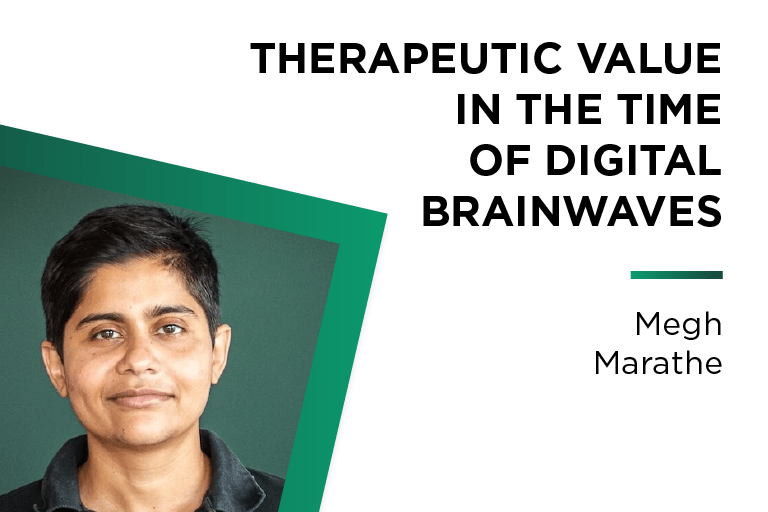Research led by Assistant Professor Megh Marathe highlights how extended EEGs provide comfort, agency and validation to epilepsy patients, significantly enhancing their well-being.
Story adapted from an article originally shared on MSU Today.
Electroencephalograms (EEGs) have been vital in diagnosing epilepsy, visualizing brain activity and monitoring seizures for more than a century. Marathe’s research adds more to the story, finding epilepsy patients derive long-lasting value from extended EEGs — beyond the diagnostic capabilities valued by medical practitioners.
Therapeutic effects
Marathe interviewed 25 patients with epilepsy, focusing on those undergoing extended EEGs (lasting 24 hours or more). These patients reported significant therapeutic benefits, including a sense of agency, comfort, and the feeling of being cared for in a controlled environment.
The continuous presence and attentiveness of medical practitioners during EEG monitoring allows for a more thorough and caring interaction, reducing patient anxiety.
“Not being rushed is a rare experience in medical settings,” Marathe said. “Patients are used to medical practitioners not having or making the time to attend to and acknowledge their experiences — one patient equated typical doctor’s appointments to the express checkout lane at the grocery store. That makes the extended witnessing that patients experience during EEG monitoring that much more special.”
The study found this was particularly true for women, people with disabilities and low-income status, where extended EEGs provided rare opportunities for underserved patients to experience such agency and reprieve. Patients undergoing extended EEG procedures have control over food, visitation and activities, which can be uncommon with other medical procedures like dialysis.
This sense of agency is further enhanced by the private rooms and advanced technology used during EEG monitoring. The monitoring itself acknowledges and validates patients’ experiences, especially when their seizure symptoms differ from the mainstream.
“By locating the pathology within the brain and making brainwaves visible, EEG monitoring places the seizures firmly within the realm of the natural,” said Marathe. “Extended EEGs helped patients prove that they are physically ill by displaying the neurological basis of seizures, which distanced the patients from the stigma associated with them.”
Extended EEGs also offer patients and caregivers a chance to learn about managing epilepsy from expert practitioners. This educational aspect is crucial for new patients and those whose seizures are not well-controlled by medication. Additionally, patients participating in extended EEGs often have opportunities to contribute to additional research about their condition. Even when the images do not yield clinically significant data, the process is considered valuable for confirming patient testimonies and guiding treatment. Marathe explained that patients tend to feel empowered by this knowledge, enhancing their sense of purpose and value.
EEGs are far more than diagnostic tools; they offer patients a sense of control, continuous care and validation. Marathe emphasizes the need to educate medical practitioners, particularly trainees, about the therapeutic benefits of extended interventions. Recognizing and providing these benefits is essential for comprehensive patient care. Additionally, hospital administrators should consider the therapeutic value of patient experiences when designing and implementing extended medical interventions.
This research calls for a broader understanding of therapeutic value in medical practices, particularly for marginalized patients. Incorporating patient perspectives and experiences is crucial for the future of healthcare, especially as automation becomes more prevalent.
“By providing a controlled environment for patients to seize under expert care, EEGs could be seen as doing the work of therapy,” Marathe said. “That is, EEGs could be considered just as valuable as treatment, instead of being dismissed as idle time.”
